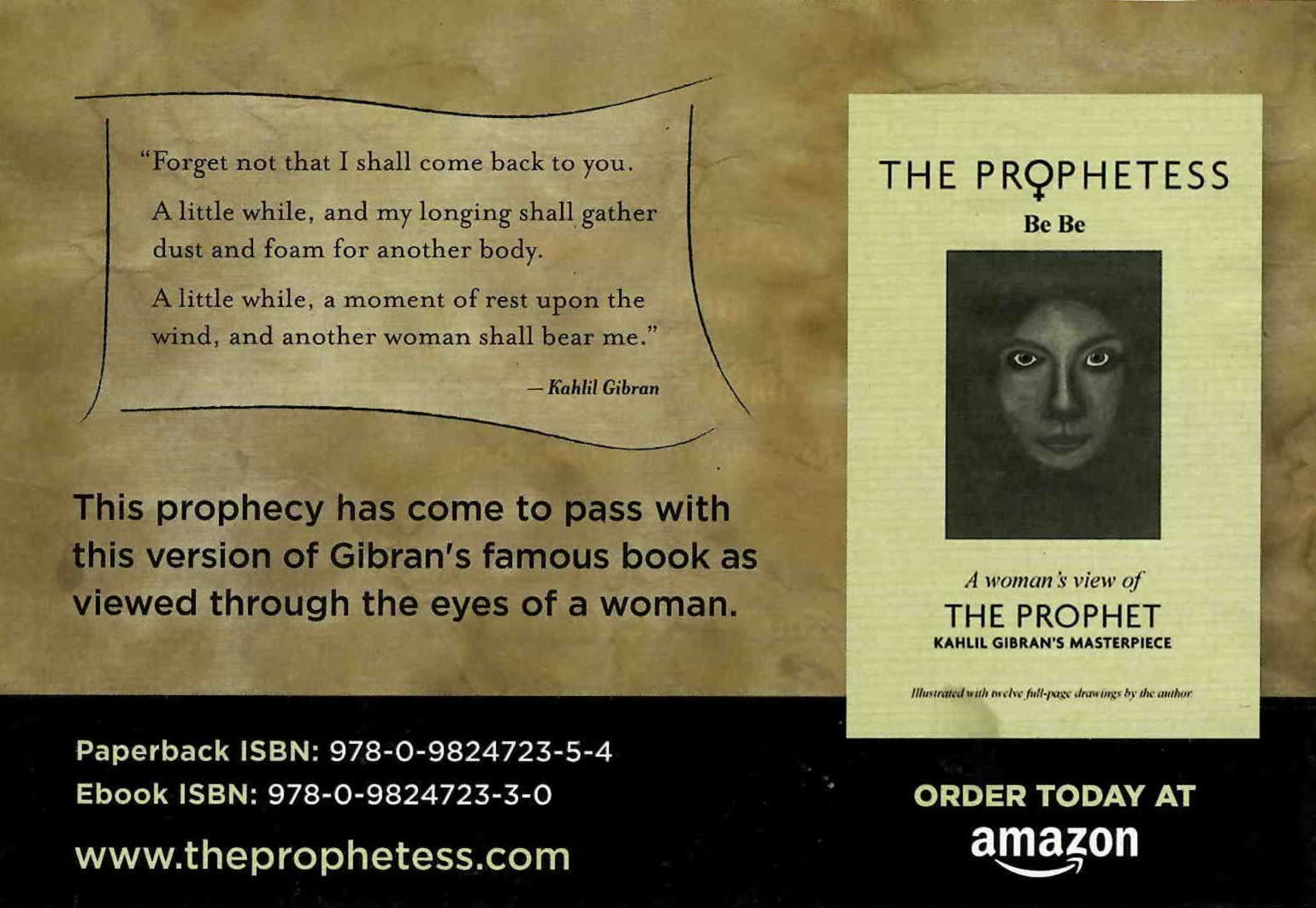
Be gender-swaps the main speaker of Kahlil Gibran’s The Prophet, which
entered the public domain in 2019, in this modest feminist intervention “to
present [the book’s] truths from the feminine point of view.” Ramla,
a prophetess, plans to leave the city of Orphalese. At the urging of a seeress
named Almitra, she addresses the questions of a crowd before departing and
offers brief, poetic responses on topics such as love, giving, work, pain,
and friendship that offer moral lessons through simple concepts. Readers familiar
with the original will recognize potent aphorisms like “Work is love
made visible” and “Consider your judgement and your appetite
even as you would two loved guests in your house.”
In the preface, Be explains, “For eons, women have had to translate meanings and truths found in books written by men in order to see how they apply to women. Women relate better to life and the personalities involved when those relationships are presented from a woman’s point of view.” Be replaces masculine pronouns with feminine pronouns and substitutes inclusive terms like “humans” for gendered terms like “man” (for humankind). Other than these changes, helpfully italicized, the work is faithful to the original text.
Be Be’s 12 illustrations are the highlight of the book. The black-and-white portrait drawings, reminiscent of the portrait on the cover of the first edition of Gibran’s original, lovingly depict individual women and girls, each wearing a headscarf and looking at the viewer with various expressions. Readers who don’t share Be’s view of relatability and gender may find this version difficult to distinguish from the original, aside from the drawings. But woman readers who agree with Be will find this project does exactly as it promises.
Takeaway: Be’s project gender-swaps the references in Kahlil Gibran’s original and includes new illustrations.
Great for fans of: Paulo Coelho, Marianne Williamson.
Production grades
Cover: A-
Design and typography: A
Illustrations: A
Editing: A
Marketing copy: A-
Print Date: 01/11/2021
